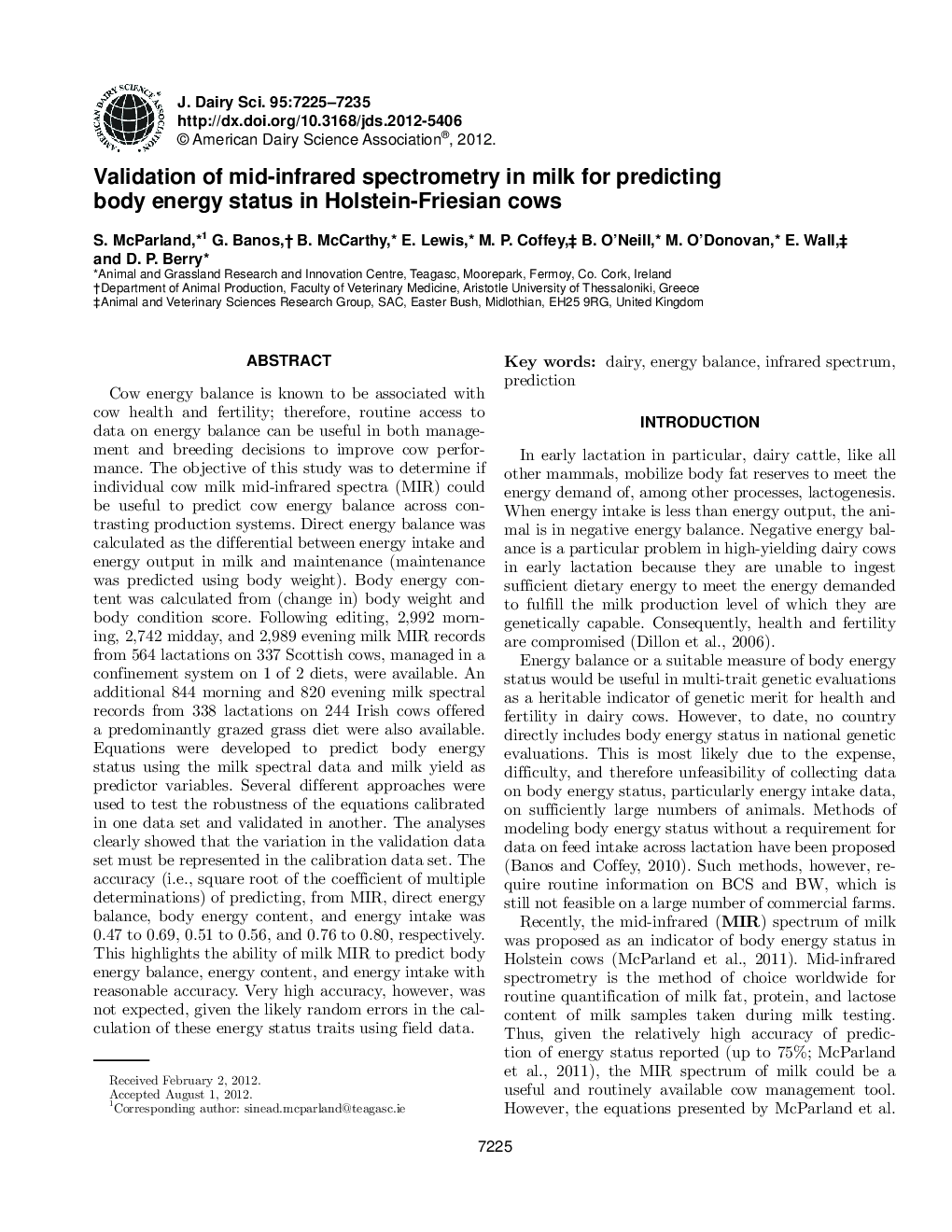| کد مقاله | کد نشریه | سال انتشار | مقاله انگلیسی | نسخه تمام متن |
|---|---|---|---|---|
| 10978692 | 1108059 | 2012 | 11 صفحه PDF | دانلود رایگان |
عنوان انگلیسی مقاله ISI
Validation of mid-infrared spectrometry in milk for predicting body energy status in Holstein-Friesian cows
دانلود مقاله + سفارش ترجمه
دانلود مقاله ISI انگلیسی
رایگان برای ایرانیان
کلمات کلیدی
موضوعات مرتبط
علوم زیستی و بیوفناوری
علوم کشاورزی و بیولوژیک
علوم دامی و جانورشناسی
پیش نمایش صفحه اول مقاله

چکیده انگلیسی
Cow energy balance is known to be associated with cow health and fertility; therefore, routine access to data on energy balance can be useful in both management and breeding decisions to improve cow performance. The objective of this study was to determine if individual cow milk mid-infrared spectra (MIR) could be useful to predict cow energy balance across contrasting production systems. Direct energy balance was calculated as the differential between energy intake and energy output in milk and maintenance (maintenance was predicted using body weight). Body energy content was calculated from (change in) body weight and body condition score. Following editing, 2,992 morning, 2,742 midday, and 2,989 evening milk MIR records from 564 lactations on 337 Scottish cows, managed in a confinement system on 1 of 2 diets, were available. An additional 844 morning and 820 evening milk spectral records from 338 lactations on 244 Irish cows offered a predominantly grazed grass diet were also available. Equations were developed to predict body energy status using the milk spectral data and milk yield as predictor variables. Several different approaches were used to test the robustness of the equations calibrated in one data set and validated in another. The analyses clearly showed that the variation in the validation data set must be represented in the calibration data set. The accuracy (i.e., square root of the coefficient of multiple determinations) of predicting, from MIR, direct energy balance, body energy content, and energy intake was 0.47 to 0.69, 0.51 to 0.56, and 0.76 to 0.80, respectively. This highlights the ability of milk MIR to predict body energy balance, energy content, and energy intake with reasonable accuracy. Very high accuracy, however, was not expected, given the likely random errors in the calculation of these energy status traits using field data.
ناشر
Database: Elsevier - ScienceDirect (ساینس دایرکت)
Journal: Journal of Dairy Science - Volume 95, Issue 12, December 2012, Pages 7225-7235
Journal: Journal of Dairy Science - Volume 95, Issue 12, December 2012, Pages 7225-7235
نویسندگان
S. McParland, G. Banos, B. McCarthy, E. Lewis, M.P. Coffey, B. O'Neill, M. O'Donovan, E. Wall, D.P. Berry,